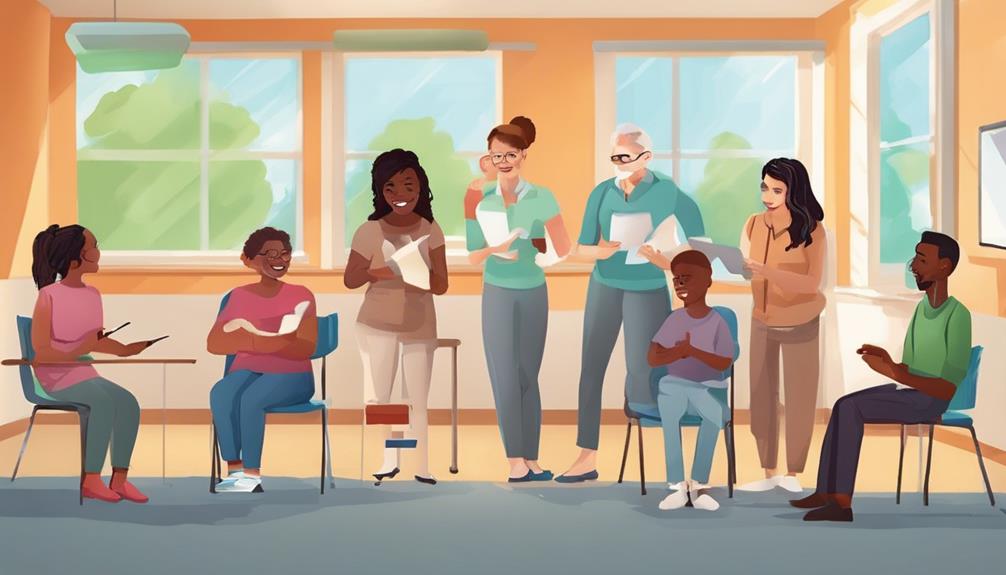Exploring the world of adult speech therapy in our area, we find a wealth of resources and support waiting to be explored.
The landscape of speech therapy has evolved significantly, offering tailored solutions for a myriad of speech-related challenges faced by adults.
But what exactly does this comprehensive guide unveil about the transformative potential of speech therapy for adults in our communities?
Let's dive into the intricacies of this vital tool that could potentially reshape not just our communication skills, but also our overall quality of life.
Key Takeaways
- Enhances communication skills and quality of life for adults.
- Addresses various speech disorders like aphasia and dysarthria.
- Tailored treatment options available for specific speech issues.
- Utilizes specialized therapies and techniques for effective treatment.
Benefits of Speech Therapy for Adults
When adults engage in speech therapy, they gain valuable tools to enhance their communication skills and overall quality of life. Speech therapy offers a range of benefits for adults, particularly in improving their communication skills. Whether it's addressing speech and language difficulties, learning compensatory strategies for better articulation, or working on cognitive-communication skills after a brain injury, speech therapy plays a crucial role in helping adults overcome these challenges.
Types of Speech Disorders in Adults
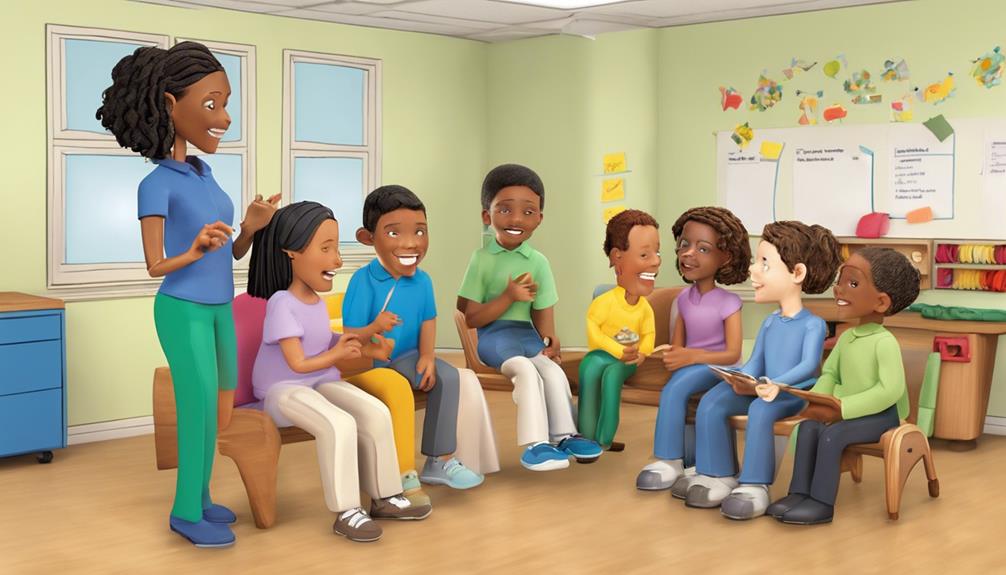
As we explore the types of speech disorders in adults, it's crucial to understand the common challenges individuals face. These include aphasia, apraxia, dysarthria, and dysphagia.
These disorders can stem from various causes such as stroke, brain injury, or neurological conditions, impacting speech and communication abilities differently.
Fortunately, adults with speech disorders have access to a range of treatment options tailored to address their specific needs and improve overall communication skills.
Common Adult Speech Disorders
Common adult speech disorders encompass a range of conditions, including aphasia, apraxia, dysarthria, and stuttering, each presenting unique challenges to communication and speech production.
Aphasia affects language processing, often occurring after a stroke, impacting communication ability.
Apraxia, a motor speech disorder, disrupts the coordination of speech movements, affecting articulation.
Dysarthria leads to speech articulation difficulties due to muscle weakness or paralysis, impacting speech clarity.
Stuttering, a fluency disorder, causes interruptions in speech flow, affecting the rhythm of communication.
Evaluation and treatment by speech-language pathologists can help individuals with these disorders improve their language skills and regain confidence in expressing themselves effectively. If you or a loved one is experiencing speech difficulties, seeking professional help is a significant step towards better communication.
Causes of Speech Issues
Neurological conditions such as stroke, traumatic brain injury, and Parkinson's disease are among the factors that can cause speech issues in adults. These conditions can significantly impact an individual's ability to communicate effectively.
Here are some common causes of speech disorders in adults:
- Aging: As we age, changes in vocal quality, articulation, and fluency can contribute to speech difficulties.
- Environmental Factors: Smoking, excessive alcohol consumption, and vocal strain can affect speech production in adults.
- Genetic Predisposition: Some individuals may have a genetic predisposition to certain speech disorders.
- Medication side effects: Certain medications can have side effects that impact speech abilities.
- Neurological Diseases: Conditions like multiple sclerosis or ALS can also lead to speech challenges.
Understanding these underlying causes is crucial in tailoring effective speech therapy interventions to improve communication and overall quality of life.
Treatment Options Available
When exploring treatment options for speech disorders in adults, it becomes essential to consider the diverse types of challenges individuals may face in their communication abilities.
Common types of speech disorders in adults include stuttering, spasmodic dysphonia, slurred speech, aphasia, and apraxia. Evaluation is crucial to determine the specific speech disorder a patient is experiencing for targeted treatment.
Specialized therapies and interventions are tailored to address the unique needs of adults with various speech disorders. These treatments aim to improve communication outcomes for individuals struggling with sound production issues in speech, singing, or learning.
Research in adult speech therapy focuses on areas like stuttering, brain imaging, and the neurobiology of music. Through clinical evaluations and personalized therapy plans, individuals can work towards enhancing their communication skills and overall quality of life.
Finding a Qualified Speech Therapist

As we aim to find a qualified speech therapist, it's crucial to pay attention to specific credentials they hold, such as specialized training in adult speech disorders.
Experience plays a vital role, so seeking therapists with a proven track record in treating adult communication challenges is essential.
Additionally, exploring therapists who offer specialized treatment options tailored to individual adult needs can greatly enhance the effectiveness of speech therapy sessions.
Credentials to Look For
To find a qualified speech therapist for adults, seek individuals with a Master's degree in Speech-Language Pathology or Communication Sciences and Disorders, state licensure, and a Certificate of Clinical Competence from ASHA. When looking for the right therapist, consider the following:
- Master's degree in Speech-Language Pathology or Communication Sciences and Disorders
- State licensure in speech-language pathology
- Certificate of Clinical Competence in Speech-Language Pathology from ASHA
- Specialized training or experience in treating adult speech and language disorders
- Experience working with adults facing various speech and language challenges
These credentials ensure that the therapist has the necessary qualifications to provide effective speech therapy tailored to the unique needs of adult clients.
Experience Matters Most
Experience significantly influences the quality of care provided by a speech therapist for adults, guiding the personalized treatment tailored to individual needs and goals. When seeking a qualified speech therapist, look for extensive experience in treating adults, especially with common speech disorders like aphasia, apraxia, and dysarthria. Prioritize therapists with a successful track record of outcomes and patient satisfaction. A therapist who offers personalized treatment plans can make a significant difference in your progress. Ensuring that the therapist has the necessary qualifications and certifications is crucial for effective therapy. Here is a helpful table to consider when evaluating a speech therapist:
| Experience | Common Disorders Treated | Successful Outcomes |
|---|---|---|
| Extensive | Aphasia, Apraxia, Dysarthria | High Patient Satisfaction |
| Specialized | Stuttering, Voice Disorders | Positive Therapy Results |
| Varied | Accent Modification, Swallowing Issues | Improved Communication Skills |
Specialized Treatment Options
In seeking specialized treatment options for speech therapy, it's essential to prioritize finding a qualified speech therapist who can cater to individual needs and conditions effectively. When looking for a speech therapist, consider the following:
- Personalized Care: Qualified therapists offer tailored treatment for disorders like aphasia and dysphagia.
- Team Collaboration: Treatment plans are developed by a team of specialists to ensure the best outcomes.
- Advanced Techniques: Therapists use innovative tools like Melodic Intonation Therapy and Visi-Pitch.
- Specialized Treatments: Therapists address Orofacial Myofunctional Disorders and swallowing difficulties.
- Targeted Programs: Specialized treatments like Lee Silverman Voice Treatment for Parkinson's patients are available.
Finding the right speech therapist can make a significant difference in your journey towards improved communication and overall well-being.
Initial Consultation and Assessment

When scheduling an initial consultation for speech therapy, what comprehensive assessments are typically conducted to evaluate speech and language abilities?
During the initial consultation, a thorough assessment of speech production, language comprehension, cognitive skills, and communication challenges is conducted. Specialized tests and tools are utilized to identify areas of strength and areas needing improvement in speech and language. The results of these assessments play a crucial role in creating a personalized treatment plan tailored to the individual's specific communication needs.
Customized Treatment Plans for Adults
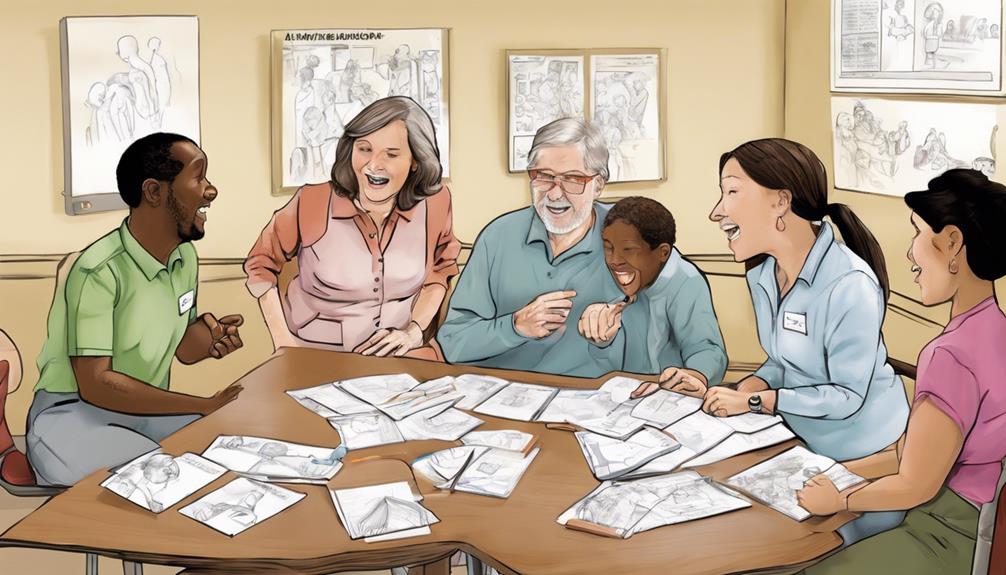
How can tailored treatment plans in speech therapy empower adults to achieve their communication goals effectively and efficiently? Customized treatment plans for adults are crafted with individual needs and goals in mind, ensuring the best outcomes. Here are some key points to consider:
- Personalized Approach: Treatment plans are tailored to address specific speech disorders like aphasia, apraxia, dysarthria, and dysphagia.
- Team Collaboration: A team of doctors and specialists work together to develop comprehensive plans for each individual.
- Exploring Alternatives: Alternative communication methods and devices are recommended to meet unique needs effectively.
- Client Involvement: Collaborative efforts with clients are emphasized to enhance communication skills and encourage independence.
- Holistic Care: The focus is on providing holistic care to adults, similar to recommending the perfect dish at a restaurant – personalized service to cater to individual preferences.
Techniques and Approaches in Speech Therapy
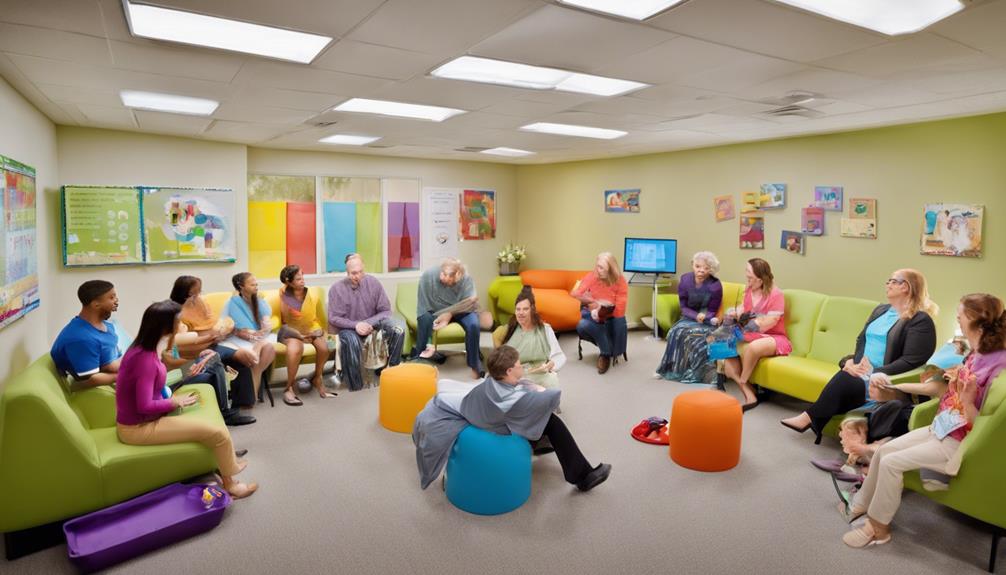
Crafting tailored treatment plans in speech therapy involves employing specialized techniques and approaches to enhance adults' communication skills effectively and efficiently. Techniques such as melodic intonation therapy, which uses intoned speech and musical elements to aid in language production, have shown promising results.
Additionally, therapists explore alternative communication methods, such as sign language or communication boards, to cater to individual needs and preferences. Vital Stim Therapy, a specialized treatment that focuses on swallowing difficulties, may include compensatory strategies during meals and guidance from a speech pathologist to improve swallowing function.
For conditions like aphasia, apraxia, dysarthria, and dysphagia, specialized treatments are available to target specific speech and language challenges. Collaborative approaches with clients often involve the use of electronic devices and video swallow studies for accurate diagnosis and treatment.
Progress Tracking and Adjustments

Tracking progress and making necessary adjustments are essential components of effective speech therapy for adults, ensuring tailored treatment plans lead to improved communication skills. Evaluations play a crucial role in measuring advancements in speech and language abilities. Adjustments to the therapy plan are necessary to optimize outcomes based on progress, goals, and feedback.
Monitoring data points like speech intelligibility, fluency, and communication effectiveness helps gauge the therapy's effectiveness. Collaborating with clients to set realistic goals and tailor treatment plans to address specific communication challenges is vital. Ongoing communication and feedback between the therapist and the client facilitate timely adjustments to the therapy approach for better results.
- Regular evaluations to measure improvements
- Adjustments based on progress, goals, and feedback
- Monitoring speech intelligibility, fluency, and communication effectiveness
- Collaborating with clients to set realistic goals
- Ongoing communication for timely adjustments
Integrating Technology in Speech Therapy

Have you ever wondered how technology is revolutionizing speech therapy for adults? Integrating technology in speech therapy has transformed the way assessments are conducted and treatments are delivered. Electronic devices and computer programs play a crucial role in enhancing the quality and effectiveness of therapy sessions. Specialized software programs like Visi-Pitch and Bungalow are commonly used to target specific speech goals. Video swallow technology, such as videofluoroscopy, enables speech therapists to accurately diagnose and treat swallowing difficulties. Additionally, electronic devices like those used in Vital Stim Therapy provide valuable support during swallowing therapy sessions, offering guidance from a speech pathologist.
| Technology Integration | Examples |
|---|---|
| Electronic Devices | Vital Stim Therapy |
| Computer Programs | Visi-Pitch, Bungalow |
| Video Swallow Technology | Videofluoroscopy |
Support Systems for Adult Speech Therapy
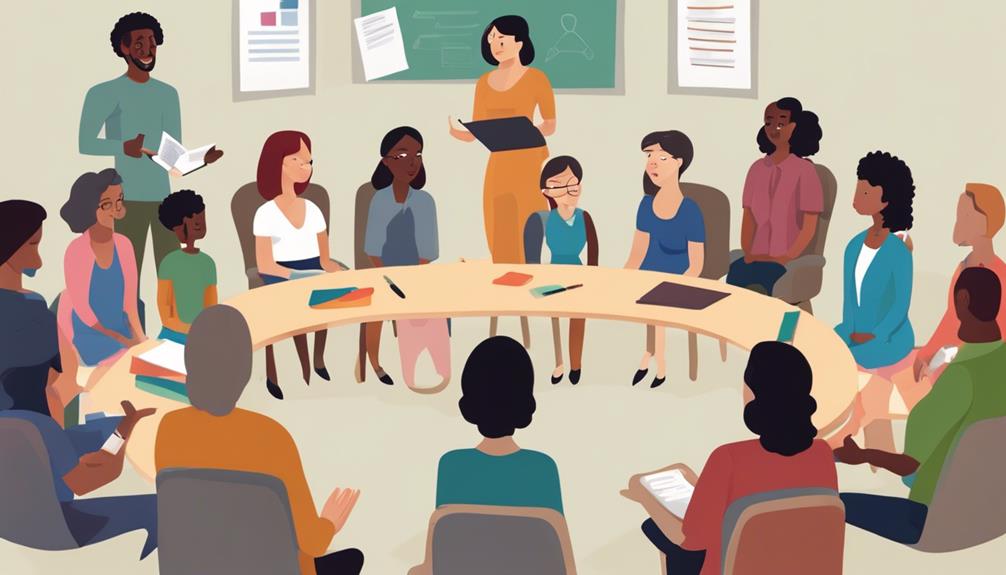
Exploring the diverse range of support systems available for adult speech therapy unveils a myriad of tailored programs addressing various communication needs and challenges. When seeking assistance, consider the following options:
- Aural Rehabilitation Services: These services offer training in informational counseling and speech reading for adults with listening challenges using amplification.
- Adult Language and Cognition Programs: Providing individualized treatment for adults with neurological conditions to address communication needs at work, home, and in social settings.
- Post-Stroke Communication Support: Weekly communication groups for adults with aphasia, available in-person or via telepractice.
- Accent Training Program: Small group discussions on communication and public speaking, focusing on enhancing pronunciation of General American English.
- Adult Literacy and Book Club (Page Turners): Sessions via telepractice using Zoom for Healthcare to help adults develop literacy skills through book club sessions.
These support systems cater to various needs and offer diverse delivery methods, ensuring individuals can access the help they require.
Continuing Care and Maintenance
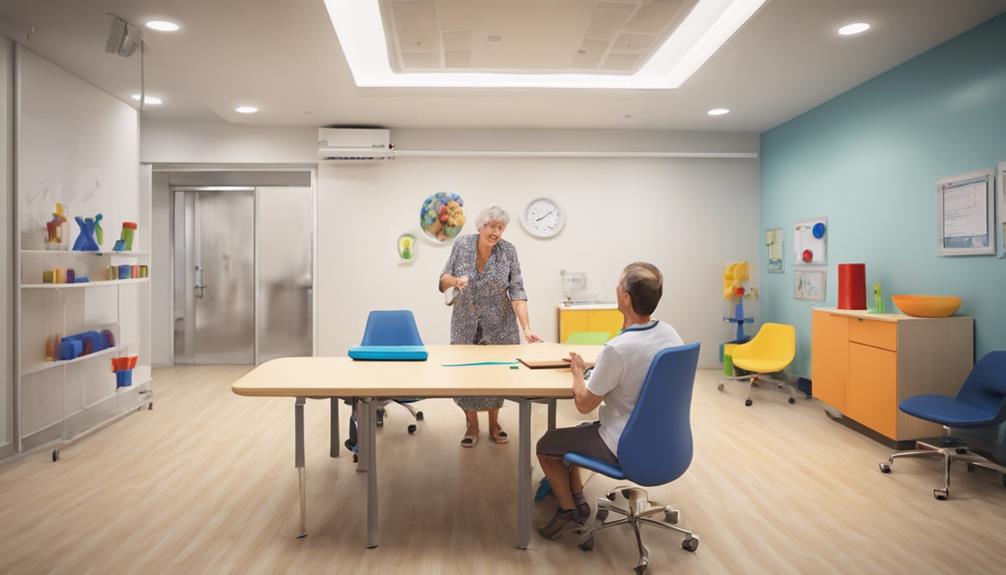
Continuing to prioritize regular follow-up sessions is essential in maintaining and enhancing the progress achieved through adult speech therapy. These sessions play a crucial role in reinforcing learned skills, adjusting treatment plans as necessary, and providing ongoing support for continued success. By participating in these regular follow-up sessions, individuals can ensure that they're staying on track with their communication goals and addressing any new challenges that may arise.
The frequency of these follow-up sessions may vary depending on each person's specific needs and the progress they've made during therapy. Maintenance sessions are designed to help adults not only maintain but also improve their communication skills over time, ensuring that the benefits of speech therapy are long-lasting. Consistent engagement in these sessions is key to sustaining and enhancing the outcomes achieved through adult speech therapy, ultimately leading to improved communication abilities and overall quality of life.
Frequently Asked Questions
Is Speech Therapy Worth It for Adults?
Yes, speech therapy is worth it for adults. It can improve communication skills, boost confidence, and enhance quality of life. Research shows positive outcomes for adults with speech, language, and swallowing disorders.
Tailored to individual needs, speech therapy addresses various challenges, fostering independence and social connections. Many adults find it beneficial for their well-being.
Can Adults Go to a Speech Therapist?
Yes, adults can definitely go to a speech therapist. Speech therapy offers tailored treatments to address a variety of communication challenges, such as aphasia or dysarthria.
With personalized plans, individuals can enhance their speech clarity and language skills. Whether in-person or through telepractice, adults have options to improve their overall communication abilities.
Seeking help from a speech therapist can lead to significant improvements in one's ability to communicate effectively.
What Is Done in Speech Therapy for Adults?
In speech therapy for adults, various techniques are employed to improve communication skills like speech, language, and swallowing. Tailored sessions address specific disorders such as aphasia, apraxia, dysarthria, and dysphagia.
Treatment may involve methods like melodic intonation therapy, Visi-Pitch, and specialized software. We also explore alternative communication methods and devices to enhance effectiveness.
The ultimate goal is to help adults regain independence and enhance their overall quality of life.
Does Speech Therapy Help With Comprehension?
Yes, speech therapy can help improve comprehension skills.
Therapists tailor exercises and strategies to enhance understanding of spoken and written language. Techniques like repetition, visual aids, and context clues are employed to boost comprehension abilities.
This targeted approach benefits individuals with conditions like aphasia, dysphagia, and cognitive-communication disorders. Progress in comprehension may vary based on the individual's condition, severity, and consistency in therapy.
Conclusion
In conclusion, speech therapy for adults offers a transformative journey towards improved communication and confidence. As we navigate the complexities of speech disorders, let's embrace the power of resilience and determination.
Together, we can unlock the potential for growth and success in every individual's unique speech therapy journey. Let's continue to support and uplift each other on this path towards enhanced communication skills and enriched lives.

